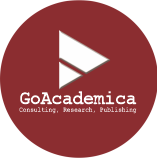MODEL KOMUNIKASI PROGRAM CSR “GAMBUT LESTARI DAN MASYARAKAT MANDIRI†PT KPI RU II PRODUKSI SUNGAI PAKNING
DOI:
https://doi.org/10.15575/jim.v3i2.22238Keywords:
Communication, CSR, Donuts Communication Model.Abstract
This study aims to analyze the communication model of the Peat Lestari CSR program and the Independent Community at PT KPI RU II, which is produced by Sungai Pakning. This study uses a qualitative descriptive approach. The technique of determining the informant is purposive. Data collection techniques using interviews, observation and documentation. Data analysis techniques use the concept of Miles and Huberman. And data validation techniques use extended participation and triangulation. The results of the study show that the Peat Lestari and Mandiri Community CSR programs use the donuts communication model. This model is to provide a starting point for improving communication in CSR programs. This suggests that there is a positive potential among corporates from organized message management. With a participatory and persuasive communication approach, it can make communication flexible. So that there will be a match of perceptions. DCM is an upgrade from traditional or ordinary communication. This communication is able to realize an interactive process. The purpose of traditional or ordinary communication is that the convergence communication model (social media) is changed to an oral communication model.
References
Alexander, F. G., & Hafied, C. (2018). Komunikasi Lingkungan Penanngulangan Kasus-Kasus Lingkungan Melalui Strategi Komunikasi. Jakarta: Prenadamedia Group.
Anuar, R. (2019). Komunikasi CSR Dalam Pemberdayaan Masyarakat. Pekanbaru: Taman Karya.
Anuar, R. (2019). Metode Penelitian Komunikasi. Pekanbaru: UR Press.
Cangara, H. (2012). Pengantar Ilmu Komunikasi. Jakarta: Raja Grafindo Persada.
Creswell, W. J. (2021). Research Design Pendekatan Metode, Kualitatif, Kuantitatif, dan Campuran. Yogyakarta: Pustaka Pelajar.
Davis, F. R. (2007). Strategic management Concepts and Cases. Prentice Hall.
Dmytriyev, S. D., Freeman, R. E., & Hörisch, J. (2021). The Relationship between Stakeholder Theory and Corporate Social Responsibility: Differences, Similarities, and Implications for Social Issues in Management. Journal of Management Studies, 58(6), 1441–1470. https://doi.org/10.1111/joms.12684
Fajar, M., & Setyaningrum, R. B. (2017). Pelaporan Program Kemitraan dan Bina Lingkungan Serta Corporate Social Responsibility Badan Usaha Milik Negara. Jurnal Media Hukum, 24(2), 193–206. https://doi.org/10.18196/jmh.2017.0095.193-206
Godfrey, P. C., & Lewis, B. (2019). Pragmatism and Pluralism: A Moral Foundation for Stakeholder Theory in the Twenty First Century. The Cambridge Handbook of Stakeholder Theory, 19–34. https://doi.org/10.1017/9781108123495.002
Lindawati, A. S. L., & Puspita, M. E. (2015). Corporate Social Responsibility: Implikasi Stakeholder dan Legitimacy Gap dalam Peningkatan Kinerja Perusahaan. Jurnal Akuntansi Multiparadigma, 157–174. https://doi.org/10.18202/jamal.2015.04.6013
Nurhazana, N., iznillah, M. L., & Pianto, S. R. (2021). Dampak Program CSR Binaan PT Pertamina RU II Sungai Pakning: Analisis Social Return on Investment (SROI) dan Sensitivitas. Jurnal Akuntansi dan Ekonomika, 11(2), 203–212. https://doi.org/10.37859/jae.v11i2.2817
Octaviani, F., Raharjo, S. T., & Resnawaty, R. (2022). Strategi Komunikasi dalam Corporate Social Responsibility Perusahaan Sebagai Upaya Pemberdayaan Masyarakat. Jurnal Ilmu Kesejahteraan Sosial, IV(1), 21–33.
Øivind Madsen, D. (2016). SWOT Analysis: A Management Fashion Perspective. International Journal of Business Research, 16(1), 39–56. http://ssrn.com/abstract=2615722
Rasyid, A. (2020). Efektivitas Peran Komunikator dalam Pemberdayaan Masyarakat pada Program Kemitraan Bina Lingkungan PTPN V di Pekanbaru. JOSETA: Journal of Socio-Economics on Tropical Agriculture, 2(1), 26–35. https://doi.org/10.25077/joseta.v2i1.218
Saleh, A., & Sihite, M. (2020). Strategi Komunikasi untuk Program Corporate Social Responsibility dalam Pemberdayaan Masyarakat. Jurnal Interaksi: Jurnal Ilmu Komunikasi, 4(1), 98–105. https://doi.org/10.30596/interaksi.v4i1.4134
Sendjaya, S. D. (2008). Pengantar Ilmu Komunikasi. Jakarta (ID): Universitas Terbuka.
Setyowati, Y. (2019). Komunikasi Pemberdayaan sebagai Perspektif Baru Pengembangan Pendidikan Komunikasi Pembangunan di Indonesia. Jurnal Komunikasi Pembangunan, 17(2), 188–199. https://doi.org/10.46937/17201926849
Sri, U. (2014). Strategi CSR Tanggung Jawab Sosial Perusahaan Untuk Meningkatkan Daya Saing Perusahaan di Pasar Negara Berkembang. Tanggerang Selatan: Literati Imprint/Lentera Hati.
Stern, B. (1994). A Revised Communication Model for Advertising: Multiple Dimensions of the Source, the Message, and the Recipient. Journal of Advertising, 23(2), 5–15. https://doi.org/10.1080/00913367.1994.10673438
Yasir. (2020). Teori Komunikasi Ragam Tradisi dan Konteks. Pekanbaru: Taman Karya.
Zulyadi, T. (2018). Komunikasi Pembangunan Masyarakat; Sebuah Model Audit Sosial Multistakeholder. Media Kajian Komunikasi Islam, 1(1), 1–15. http://jurnal.ar-raniry.ac.id/index.php/peurawi
Downloads
Published
How to Cite
Issue
Section
Citation Check
License

This work is licensed under a Creative Commons Attribution-ShareAlike 4.0 International License.













